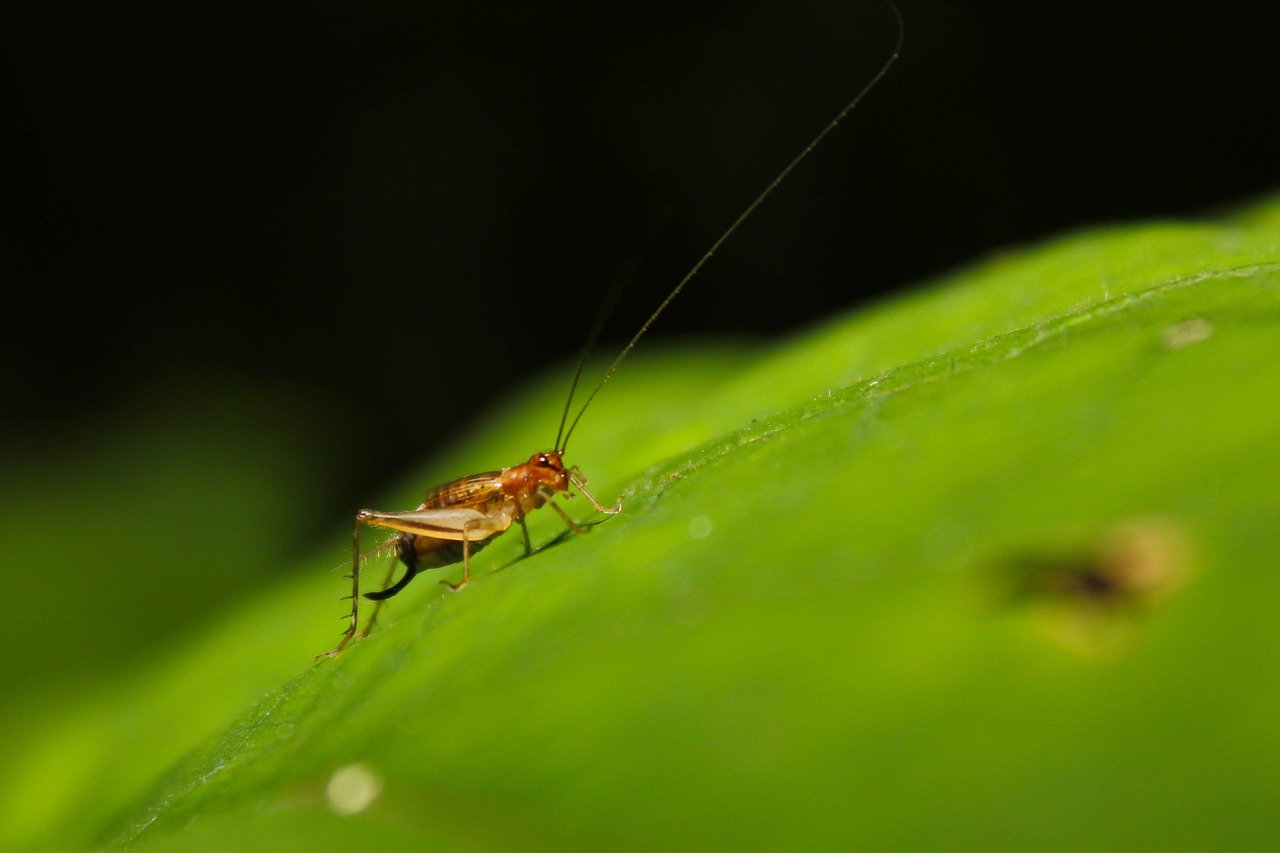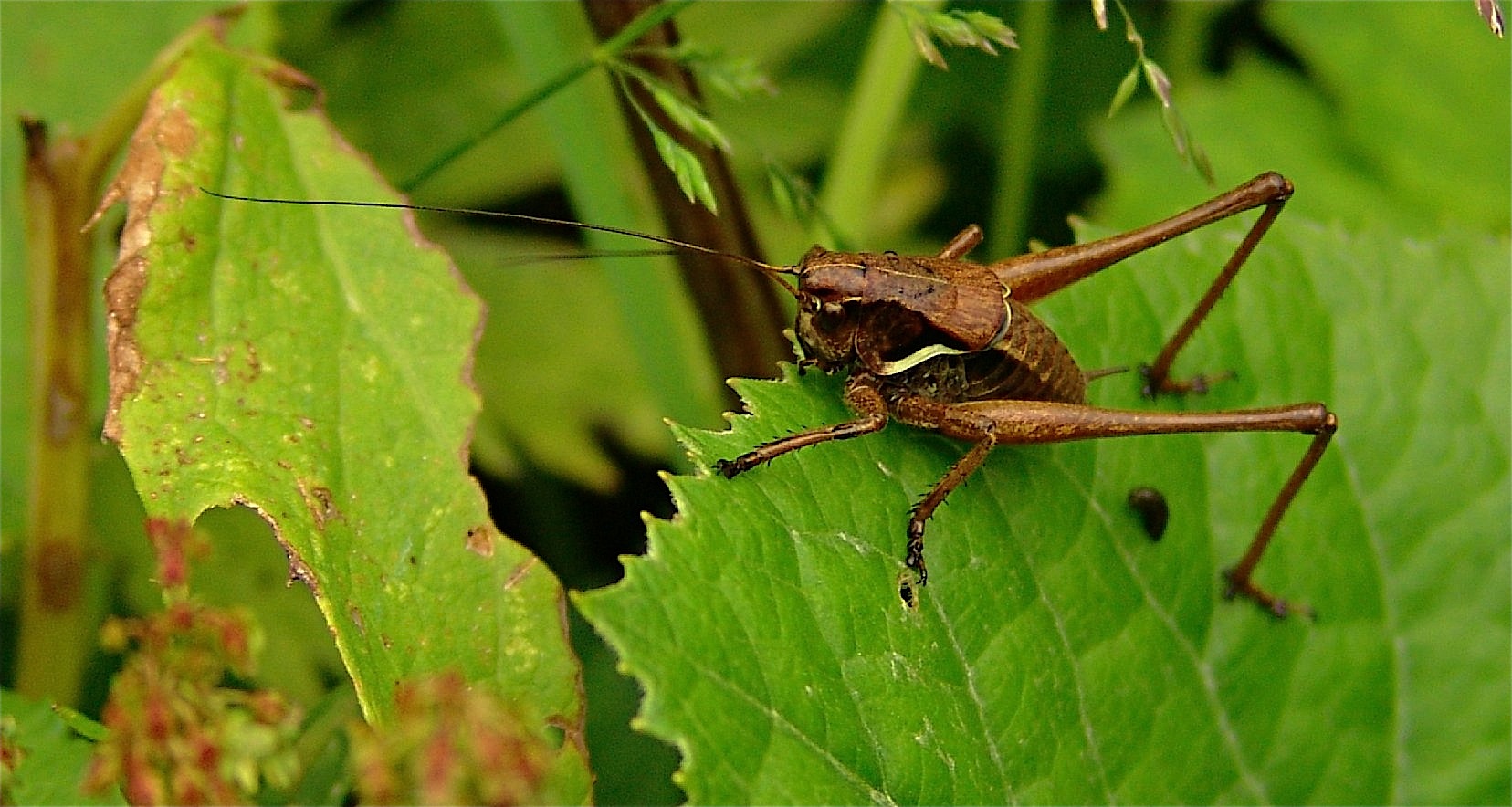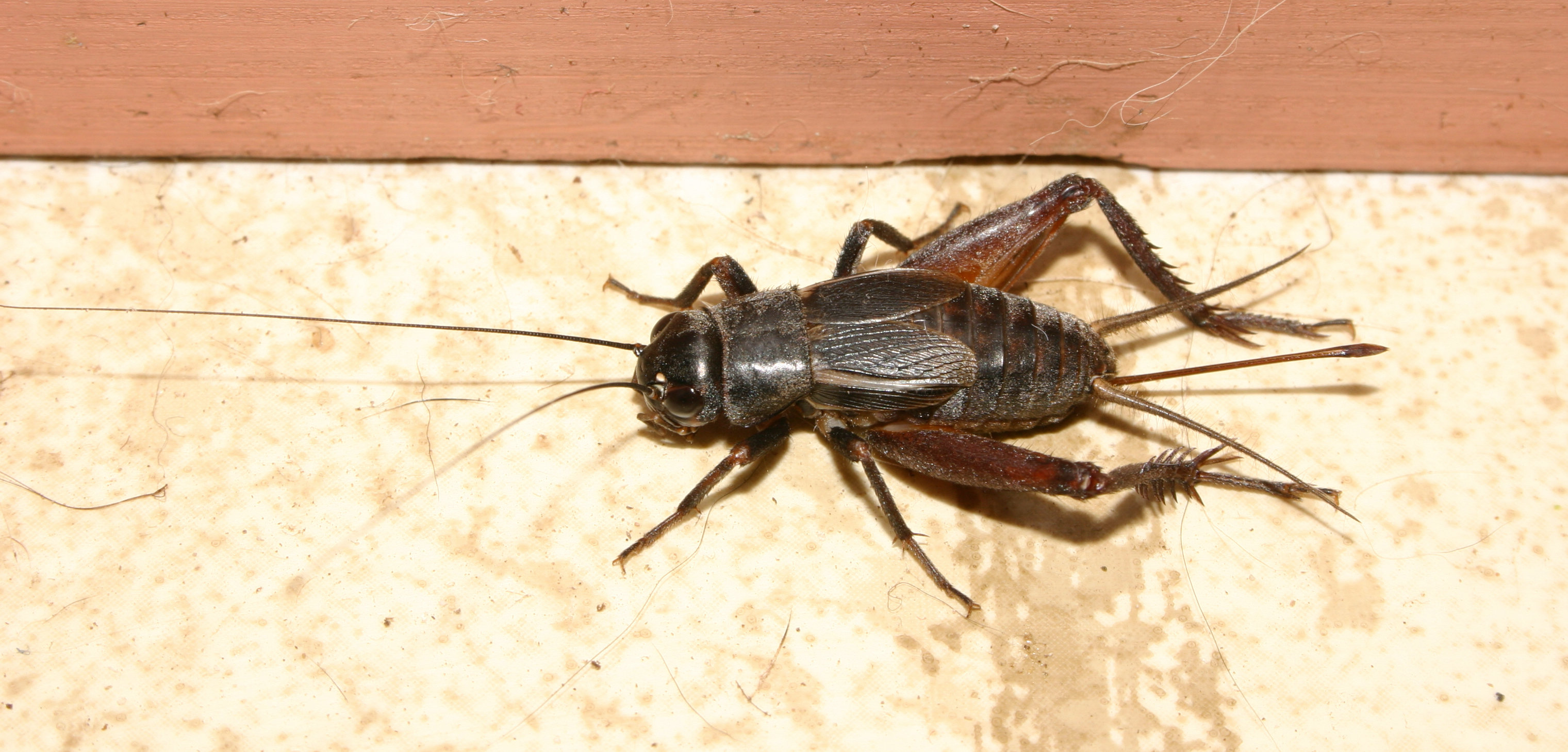Here’s a great way to combine nature studies, science and math in a really fun way — use crickets to tell the temperature!
My husband has been teaching our kids to tell the temperature by counting cricket chirps for years. It sounds like a bit of blarney, but it actually works and scientists have been using the trick since the late 1800’s.

How does it work? Crickets, like all insects, are cold-blooded, which means they take on the temperature of their surroundings. There is a special equation called the Arrhenius equation that cold-blooded animals follow that determines things like the speed at which ants walk and the rate that crickets chirp.
All living things have many chemical reactions that go on inside their bodies. The Arrhenius equation describes the activation energy (or threshold energy) required to make a chemical reaction occur inside the organism. As the temperature rises, it becomes easier for chemical reactions in cold blooded animals to happen, so they happen more rapidly. Chemical reactions are needed to contract the muscles crickets use to chirp. As the temperature rises, the rates of the chemical reactions inside the crickets’ bodies speed up, causing characteristics such as the chirping to also speed up.

The formulas differ slightly, depending on whom you ask.
- The first cricket temperature formula was created by A. E. Dolbear in 1898. He studied various species of crickets to determine their chirp rate and then created Dolbear’s Law: T=50+[(N-40)/4] (with T representing temperature Fahrenheit and N representing number of chirps in 1 minute).
- NOAA uses the simple formula of counting the chirps in 15 seconds and adding 40.
- The Old Farmers’ Almanac recommends another simple formula: To get a rough estimate of the temperature in degrees Fahrenheit, count the number of chirps in 15 seconds and then add 37.
- To get the temperature in degrees Celsius, count the number of chirps in 25 seconds, divide by 3, then add 4.
Want to get even more precise? Dolbear and some other scientists determined that different species of crickets and katydids chirped at slightly different rates. They devised different formulas for each of these species:
Field Cricket T = 50+[(N-40)/4]
Snowy Tree Cricket T = 50+[(N-92)/4.7]
Common True Katydid T = 60+[(N-19)/3]
(T=Temperature, N=Number of chirps per minute)

Challenge the kids to determine which variety of cricket is common in your back yard and see if the formula gets a more accurate temperature.
Be sure to tell the kids that (usually) only male crickets chirp, and usually only at night. There are actually several reasons why they chirp.
Scientists think that these reasons can be:
- Calling to attract a female with a a loud and monotonous sound
- Courting a nearby female with a quick, softer chirp
- Behaving aggressively during the encounter of two males
- Sounding a danger alert when sensing trouble
How do crickets chirp? Crickets make sounds by using a process called stridulation, where special body parts are rubbed together to make a noise. Crickets have a special structure on the top of their wings called a scraper. They raise their wings to a 45-degree angle (similar to the way we raise the lid on a piano to increase its volume) and draw the scraper of one wing across a series of wrinkles on the underside of the other wing, which is called a file. The process is somewhat like running your fingernail across the teeth of a comb, and it results in the characteristic chirping sound.

For more information on crickets, see:
Now the challenge for the kids is to grab some stopwatches, a thermometer, notepads and paper, and head out to find some cricket chirps to count.
Have fun!

This project is one of the summer nature study projects in my book, A Magical Homeschool: Nature Studies (52 Wonderful Ways to Use Nature Studies in Every Season to Teach Science, Math, Art and More). It’s free to read if you subscribe to Kindle Unlimited, and it’s also available to purchase on Kindle and in a paperback version that includes nature journal pages, birding logs and more.
The book features 52 nature study projects (like this one!), broken down into sections for all four seasons.
Most of the projects are ones that we’ve done many times in our own homeschool over the years, including lots of our favorites. They are designed to work with multiple ages, so families can do the activities together.
(This page contains affiliate links. Purchases made on Amazon through our links earn us a small commission at no extra cost to you. Thanks!)




